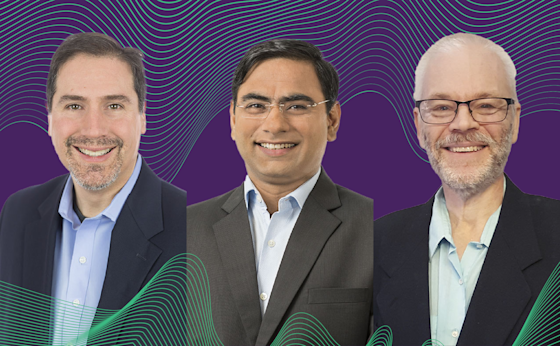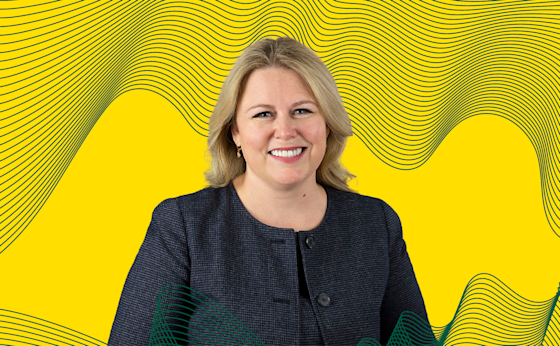
Application development professionals should use this report to understand the value they can expect from a process mining, modeling, and documentation provider and to select one based on size and functionality.



Get access to a single webinar that is currently outside of your subscription.
Price: $300 (USD)
Partner with Forrester Research to get access to webinars, insights and frameworks aligned to your role. Shorten the time between a great idea and a great outcome, helping your teams win in the age of the customer.
The process optimization market, which consists of process
mining, task mining, process modeling, and documentation, stood at $525 million
in 2021. This market has traditionally served process improvement professionals
but increasingly has become a feeder for process automation initiatives by
providing objective insight into the efficiency and effectiveness of existing
processes as well as powerful tools to collaboratively drive process reengineering.
This research analyzes the market size, market drivers, and geographic and
vertical presence for the overall process optimization market.
In this webinar, principal analyst Bernhard Schaffrik and researcher
Renee Taylor give an overview of the process optimization market and provide
technology leaders with insight into the drivers and implications of this small
but important market.
You'll receive an email with dialing and Webex instructions prior to the Webinar.
See the Webinar FAQs for answers to technical and other Webinar questions.

Application development professionals should use this report to understand the value they can expect from a process mining, modeling, and documentation provider and to select one based on size and functionality.

The market for process optimization is $525 million in 2022. EMEA and North America lead geographically. Financial services and manufacturing lead verticals.

This webinar was originally scheduled for June 12th, 2025.In today's fast-paced digital landscape, businesses must adapt to ever-evolving technological demands. Join us for an insightful webinar where we delve into the importance of business-optimized networks and how they can transform your organization's efficiency and productivity.Key takeaways: Understand business-optimized networks — what they are and why they matter.Discover benefits of optimization — enhanced performance, security, and scalability.Explore real-world applications — case studies and success stories.Learn implementation strategies — practical steps to optimize your network.Target audience level: beginner and intermediate

End-to-end automation means different things to different people. At its narrowest, it’s going from compile to staging. More broadly, it can encompass the entire software development lifecycle, from collecting requirements to eventual retirement of the product and the infrastructure it runs on. Join Naveen, Chris, and Andrew to learn where to best end — and start — your automation journey.Key takeaways: Learn what end-to-end automation means.Discover how to redefine the boundaries of automation.Target audience level: intermediate and advanced

B2B buyers are rapidly adopting AI-powered search as one of their primary sources of information. Providers will have to shift their marketing strategy to engage buyers in zero-click environments before they arrive at their sites.This webinar looks at how buyers are using AI-powered search, how zero-click search is impacting the revenue engine, and how to coordinate activity across portfolio marketing, content, communications, and digital to engage buyers in this new environment.Key takeaways: Understand how to adjust your marketing goals and strategies for zero-click search.Learn how to measure your performance on zero-click search.Discover digital, content, and messaging techniques for reaching buyers through zero-click search.Target audience level: intermediate

Today’s public sector environment changes daily. Tech leaders in government groups are pushed to maximize the budget they have. The most logical place to start? Portfolio rationalization. Techniques such as project prioritization, resource allocation, and redundancy elimination are essential to streamline operations and enhance overall efficiency. Although these steps will help drive down cost — the goal is creating a more adaptive platform that is responsive to changing needs and capable of integrating advanced technologies, including AI. This AI-ready framework enables agencies to leverage data-driven insights for better decision-making, predictive analytics for future planning, and automation to reduce manual workloads, ultimately driving innovation and delivering superior outcomes for their constituents.Key takeaways: Learn how to assess and rank projects based on strategic importance and resource availability to ensure optimal portfolio composition.Discover techniques to streamline operations by removing overlapping or unnecessary initiatives, thereby improving efficiency.Gain insights into effective resource management strategies that enhance operational effectiveness and drive better outcomes for government agencies.Target audience level: beginner and intermediate

CRM is a critical piece of technology infrastructure that underpins a firm’s ability to deliver next-generation financial services. It connects organizational silos to drive customer and business value. CRMs are integrating AI and adding intelligent agents to boost productivity and deliver personalized customer experiences at scale. This makes CRM an indispensable tool for financial services firms aiming to enhance customer experiences, streamline operations, and drive growth.Despite the benefits, we often hear that financial services firms struggle to justify the investment in CRM modernization, and firms that have done so say that they’re struggling to extract value. This makes it more important than ever to choose the right vendor. But the financial services CRM market is bifurcating, making vendor choice even harder.Key takeaways: Understand the financial services CRM market, key vendors, and common financial services use cases.Learn how AI (predictive, generative, and agentic) is transforming CRM and what it means for financial services firms.Uncover the mistakes that are leading to the underutilization of CRM by financial services firms.Identify the key considerations that should inform financial services firms’ CRM purchasing decision.Target audience level: intermediate and advanced

Generative AI (genAI) and agentic workflows are roiling technology services markets, overturning the 15-year stability of the prevailing business model. The era defined by time-and-materials pricing, agnostic technology positions, and people-driven business growth is no longer viable. Since the peak growth seen in 2021, the sector has become entirely different.Starting in 2022, four powerful forces began converging to disrupt the services status quo, forcing providers toward radically different choices and reshaping the sector to deliver what enterprises need now.Key takeaways: Learn how four forces shape technology service business models.Find out what separates winners from losers.Explore how, as a buyer of services, you can thrive in a reconstructed services economy.Target audience level: intermediate